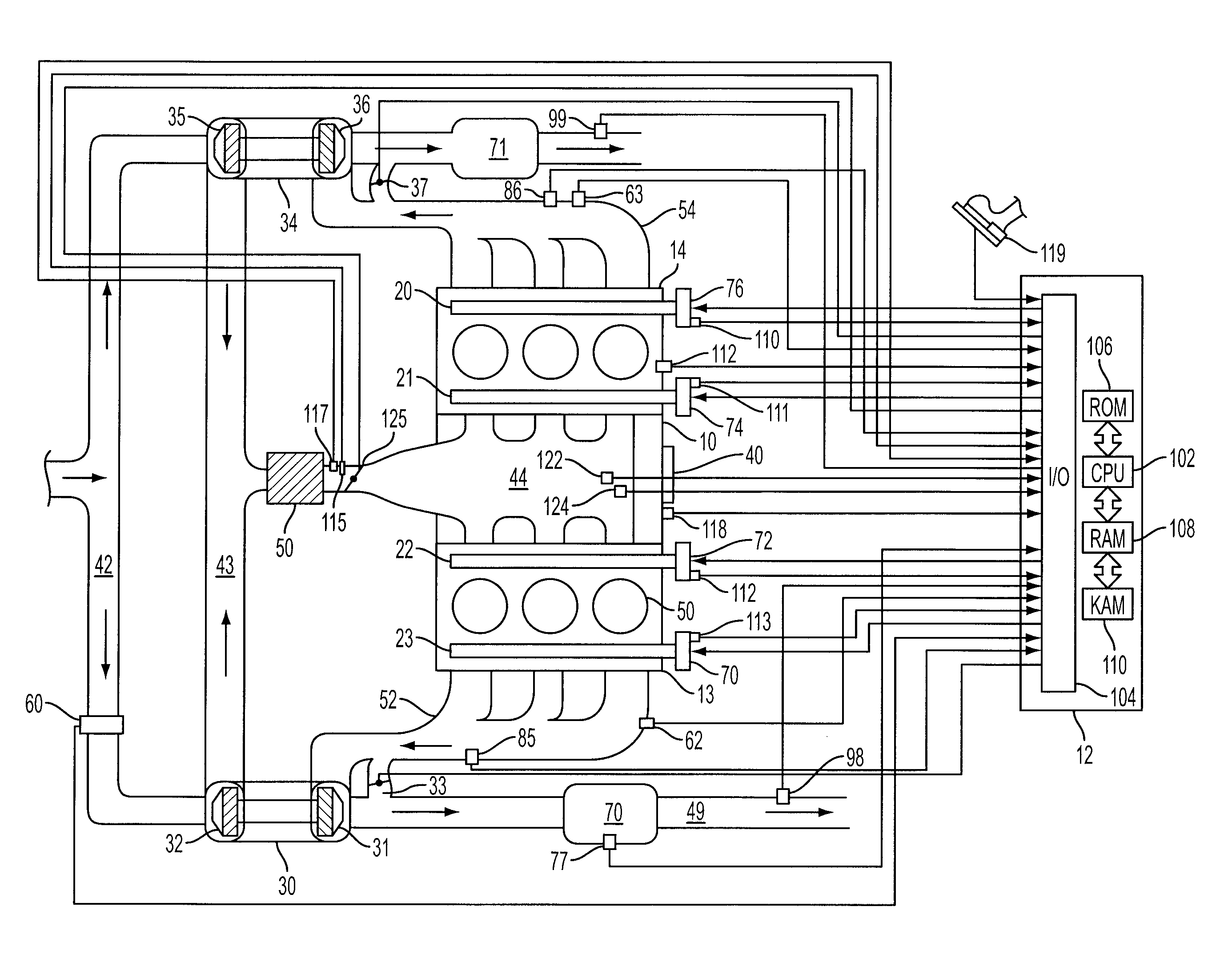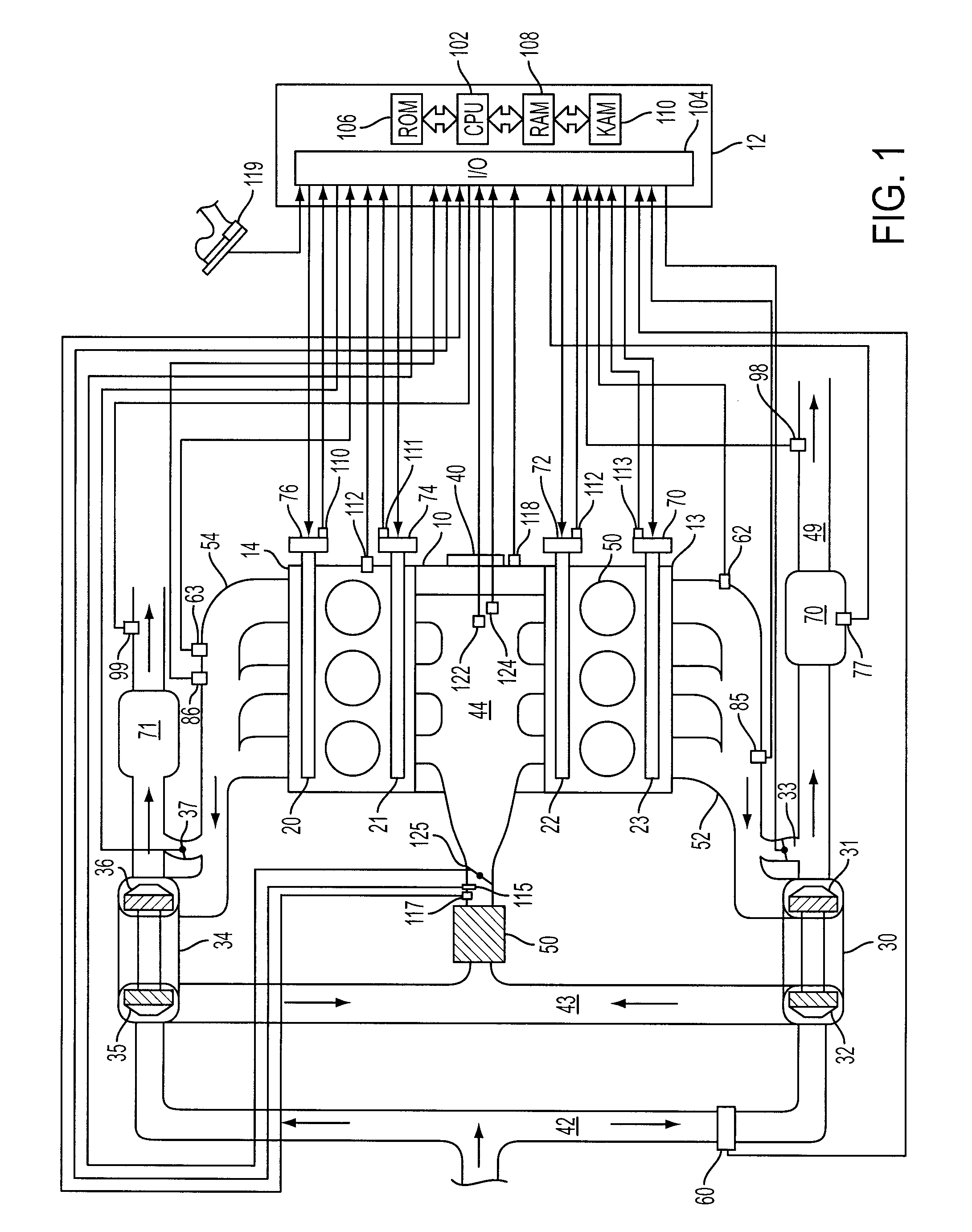Controlling cylinder mixture and turbocharger operation
a technology of cylinder mixture and turbocharger, which is applied in electrical control, non-mechanical valves, instruments, etc., can solve the problems of affecting the amount of exhaust gas residuals, affecting the operation of turbocharger and cylinder, and less available space for fresh air in the cylinder, so as to reduce the variation of cylinder mixture, reduce the difference in mixture differences and flow differences between different cylinder groups of turbocharged engines, and reduce the effect of cylinder mixture variation
- Summary
- Abstract
- Description
- Claims
- Application Information
AI Technical Summary
Benefits of technology
Problems solved by technology
Method used
Image
Examples
Embodiment Construction
[0020]Referring to FIG. 1, internal combustion engine 10 is controlled by electronic engine controller 12. Engine 10 includes a plurality of cylinders in a “V” configuration that are similar to cylinder 50. Cylinder banks 13 and 14 are comprised of three cylinders each. Intake cams 21 and 22 operate intake valves (not shown) to regulate airflow into the cylinders of banks 13 and 14. Exhaust cams 20 and 23 operate exhaust valves (not shown) to regulate exhaust flow out of cylinder banks 13 and 14. Timing of intake and exhaust cams relative to crankshaft position can be varied by adjusting phasors 76, 74, 72, and 70. Alternatively, one or more intake, or exhaust valves may be operated without assistance from a mechanical cam (e.g., electrically or hydraulically actuated valves). Further, intake and / or exhaust valves may be configured to vary valve lift. Each cylinder surrounds a piston that transfers combustion energy to mechanical energy through crankshaft 40. Intake manifold 44 is i...
PUM
 Login to View More
Login to View More Abstract
Description
Claims
Application Information
 Login to View More
Login to View More - R&D
- Intellectual Property
- Life Sciences
- Materials
- Tech Scout
- Unparalleled Data Quality
- Higher Quality Content
- 60% Fewer Hallucinations
Browse by: Latest US Patents, China's latest patents, Technical Efficacy Thesaurus, Application Domain, Technology Topic, Popular Technical Reports.
© 2025 PatSnap. All rights reserved.Legal|Privacy policy|Modern Slavery Act Transparency Statement|Sitemap|About US| Contact US: help@patsnap.com



